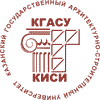About the authors
| First name, Middle name, Last name, Scientific degree, Scientific rank, Current position. Full and brief name of the organization, The organization address. | Dmitry V. Seregin, architectural company CROX, Shanghai, China, director of architecture & design E-mail: This e-mail address is being protected from spambots. You need JavaScript enabled to view it , ORCID: 0009-0005-7448-8891 Evgenii I. Prokofiev, candidate of architecture, professor, Kazan State University of Architecture and Engineering, Kazan, Russian Federation E-mail: This e-mail address is being protected from spambots. You need JavaScript enabled to view it , ORCID: 0000-0003-0609-7176 |
| Title of the article | Discreteness as a condition for the formation of architectural form on the example of Art Deco |
| Abstract. | Architectural discourse is constantly evolving, responding to contemporary challenges and striving to find new methodological foundations for design. This article examines the theory of discreteness by Gilbert Simondon as a theoretical tool for reinterpreting historical architectural objects. Although this theory is more often applied to the analysis of modern design processes, it can also be productively applied to the study of historical heritage sites. Problem Statement: Existing approaches to the study of architectural heritage are primarily based on stylistic and morphological analysis, which limits their potential for contemporary interpretation. Therefore, it is necessary to apply modern theory (using Gilbert Simondon’s theory of discreteness as an example) as a tool capable of revealing the hidden processes of form-generation in Art Deco architecture and demonstrating its potential as a dynamic system rather than a static historical style. The purpose of the study is to determine the possibility of applying Gilbert Simondon’s theory of discreteness to deepen the understanding of the architectural expressiveness of historical heritage sites, using Art Deco projects as an example. The research tasks are to identify the relationship between historical methods of architectural expression and new approaches to interpreting architectural form; to analyze historical Art Deco projects using discreteness theory; and to systematize the results of a new architectural interpretation of cultural heritage sites. Results: This article explores and systematizes the diversity of architectural techniques in four projects within a unified style, using methods for analyzing both the overall artistic and figurative plan and geometric, constructed detailing. Each object within a unified stylistic framework has distinct imagery, techniques and design logics. Conclusions: Discreteness theory demonstrates that architectural heritage projects are relevant and open to interpretation. Within the context of a unified style, the integrity of style and the multiplicity of approaches are preserved, demonstrating the duality of this state. The proposed approach to structuring architectural form is alternative to the traditional method. The interaction of geometry and language within the context of style with graphic patterns (vector and raster) is also revealed. By applying natural conditions, architecture begins to utilize the basis of natural, geonic structures. |
| Keywords. | Geonics, discreteness, Art Deco, architectural techniques, historical heritage |
| For citations: | Seregin D.V., Prokofiev E.I. Discreteness as a condition for the formation of architectural form on the example of Art Deco // News of KSUAE, 2025, № 3 (73), p.222-232, DOI: 10.48612/NewsKSUAE/73.18, EDN: SYPXHB |
















